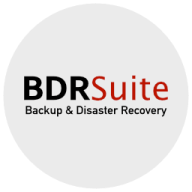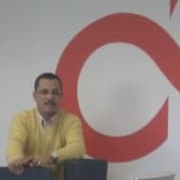

Teradata and BDRSuite Backup & Replication compete in the data management and backup solutions category. Teradata has the edge in advanced data processing capabilities, while BDRSuite leads in cost-efficiency and ease of use for backup purposes.
Features:Teradata offers massive parallel processing, advanced analytics, and scalability, including geospatial analytics and a solid workload management system. BDRSuite provides simplicity and reliability in backup and recovery, with features like virtual machine backups, instant data recovery, and easy adaptability for IT infrastructures.
Room for Improvement:Teradata needs to address its high costs and complexity, especially concerning cloud adoption, alongside improving performance with unstructured data and enhancing technical support responsiveness. BDRSuite requires improvements in user interface design and documentation, particularly in cloud scenarios, as well as faster, more precise technical support and integration capabilities.
Ease of Deployment and Customer Service:Both Teradata and BDRSuite offer flexible deployment options, including on-premises, private, and hybrid clouds. Teradata's deployment is robust yet complex and expensive, while its customer service is generally adequate but varies in response time. BDRSuite is praised for simplicity and affordability, particularly by smaller businesses, though communication and swift problem resolution in customer service could improve.
Pricing and ROI:Teradata's premium pricing offers high ROI through its advanced features, appealing to performance-driven businesses, but remains a barrier for smaller projects. BDRSuite is noted for competitive pricing and flexible licensing, enhancing its ROI for budget-conscious businesses without sacrificing essential functionality.


BDRSuite by Vembu offers comprehensive and cost-effective Backup and Disaster Recovery software tailored to meet the diverse data protection requirements of Businesses and Service Providers. BDRSuite provides robust backup solutions for a wide range of IT workloads, including virtual machines, servers, endpoints, SaaS applications, cloud VMs, NAS/File Shares, and databases & applications. It offers the flexibility to store backups anywhere and centrally manage the entire backup infrastructure.
BDRSuite is designed to help businesses keep their data secure and ensure it is easily recoverable in the event of data loss or ransomware attacks. With BDRSuite, businesses can achieve reliable data protection and ensure business continuity – all at an affordable price.
Download BDRSuite's 30-day Free Trial Here.
PRICING DETAILS
VMs, Servers & Cloud Backup at $48 per workload/year (VMware, Hyper-V, KVM, oVirt, Proxmox, Windows, Linux, AWS, Azure, File Share-500 GB)
Endpoint/Workstation Backup at $12 per endpoint/year (Windows, Linux, Mac)
SaaS Backup at $12 per user/year (Microsoft 365, Google Workspace)
DBs & Applications Backup at $72 per application/year (SQL Server, PostgreSQL, MySQL, Microsoft Exchange Server, SharePoint Server)
Teradata is a scalable data analytics platform designed to meet enterprise demands for large-scale data management and processing, focusing on performance, scalability, and security for complex query executions.
As a leading data warehousing solution, Teradata integrates advanced analytics enabling organizations to derive insights from massive datasets. It supports high-volume data workloads with its architecture optimized for analytical queries. Users benefit from its robust scalability, allowing seamless expansion as data grows. Teradata's SQL engine is compatible with a wide range of data types, ensuring flexibility in data analysis. With advanced security measures, it protects sensitive data across various environments, providing peace of mind to users handling critical information.
What are the most important features of Teradata?Teradata is widely used in industries like finance, telecommunications, and healthcare, where data-driven decisions are critical. Companies leverage its robust analytics capabilities to enhance customer experiences, streamline operations, and ensure compliance with regulatory requirements. In these sectors, quick access to data insights can significantly impact competitive advantage.
We monitor all Backup and Recovery reviews to prevent fraudulent reviews and keep review quality high. We do not post reviews by company employees or direct competitors. We validate each review for authenticity via cross-reference with LinkedIn, and personal follow-up with the reviewer when necessary.